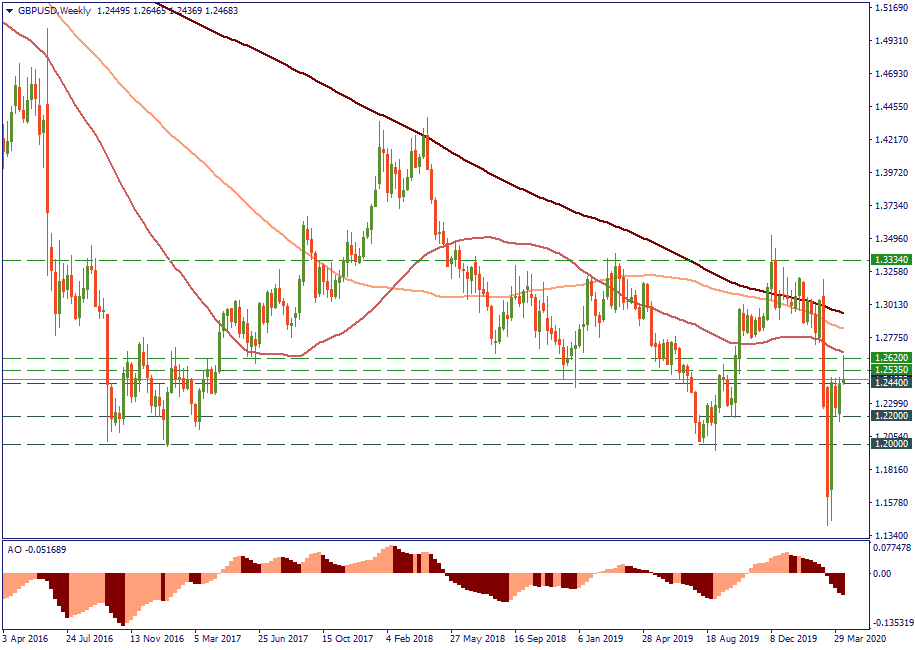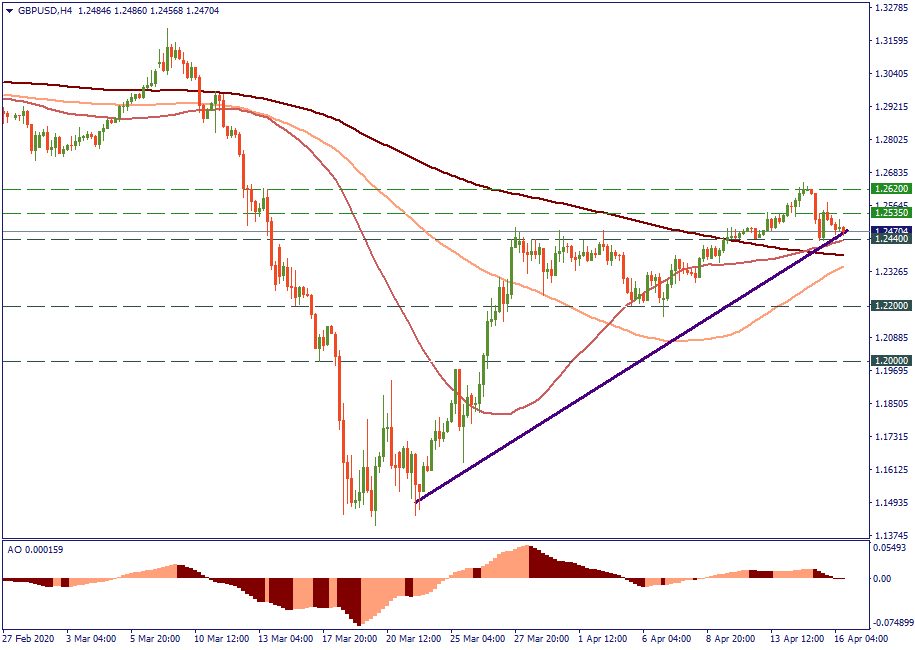GBP: three factors
Technicals
Strategically, the British pound is slowly sliding down against the USD.
If we were to take into account only the performance of 2018-2019, it would look even sideways within the range of 1.2000 – 1.3334 (with the exception of the last virus-forced downswing).
However, the larger picture suggests a gradual downward movement. It is reflected by the 200-MA which serves as reliable long-term support and proved so stay as such as the price tried to inch above it multiple times in the end of 2019 but eventually bounced down.

Lately, however, the GBP has been showing a stronger bullish potential. After touching the bottom in the middle of March, the GBP has been only gaining strength against the USD.
It has to be noted, though, that a large portion in that upswing should be ascribed to the instability of the USD rather than a true strength of the GBP. The very last piece of the currency pair performance suggests that the GBP/USD indeed follows the USD more than the GBP. Once the investors started buying up more US dollars on hurtful news of the economic damage coming from the US labor and stock market and other sources, the GBP/USD went into a decline.
Currently, it trades at 1.2478 testing the support of the 50-MA at 1.2440. Although it hasn’t broken the local upward trend yet, the short-term outlook appears to favor a sideways scenario.

Fundamentals
There are three main factors that have been influencing the life of the GBP recently: virus, Boris Johnson, and Brexit.
The first one is obviously a complex one. The latest news suggests that the infections curve may be coming to its tip these days, which would definitely support GBP. Once that is confirmed, the restrictions of social activity will be lifted, and the economy will gradually back to normal functioning. Understandably, the government officials have to face a tough choice: to lift quarantine at the soonest, avoid economic recession but risking more infections, or prolong the quarantine ensuring public health but increasing the risk of the economic slow-down. This week and the next one will define what it will be in this regard.
Boris Johnson, of course, is not a fundamental impact factor as such, but his illness with coronavirus and the ICU story did press on the GBP when it was in a crisis stage. It turned out to be a victory eventually when the British PM left the hospital and announced that he is all good and back to work – that also inspired the GBP for a stronger upward movement.
Lastly, Brexit is still there, and the time is ticking. Obviously, the virus damage aggravated the problem not only because it forced the government to redirect time and resources to fight the virus but because the virus forced to the brink of bankruptcy those companies and business individuals which could have been a basis for Brexit’s successful outcome for Britain. Now that a big part of them is getting erased from the fields of economic activity, it will be much harder to revive them and attract investments to an already under-invested economy.
Needless to say, the coming months are going to be a challenge for the GBP, but hopefully, for Britain, it will be over soon, and it will be another victory. At least, for 2020.